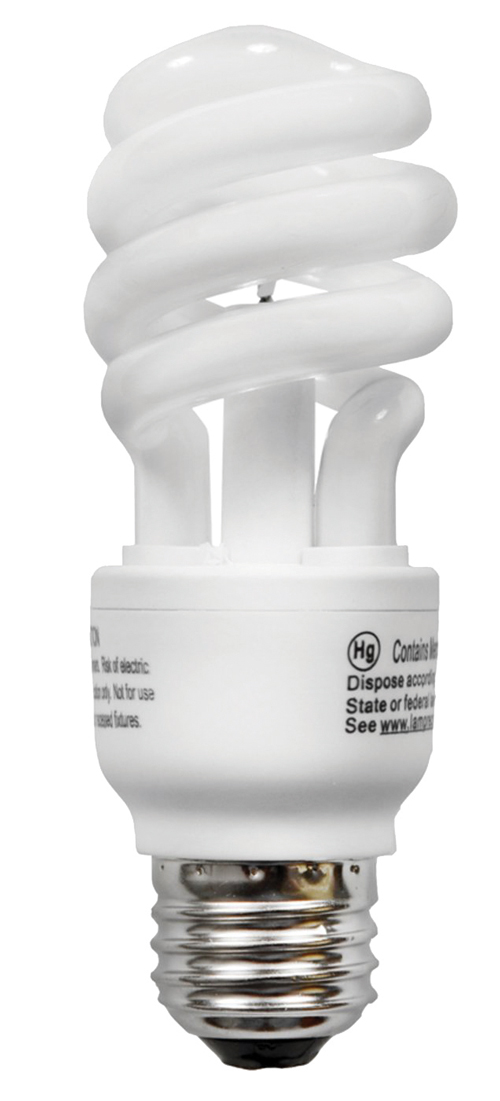Keeping It Green, Keeping It Cheap
save money on your energy bill one step at a time with these easy tips
 Lighting is one of the easiest places to start saving energy.
Lighting is one of the easiest places to start saving energy.
Replacing your five most frequently used light fixtures or the bulbs in them with Energy Star qualified lights can save more than $65 a year in energy costs. Energy Star qualified compact fluorescent light bulbs (CFLs) provide high-quality light output, use 75 percent less energy, and last 6–10 times longer than standard incandescent light bulbs, saving money on energy bills and replacement costs.Remember to always turn off your lights when leaving a room. Turning off just one 60-watt incandescent bulb that would otherwise burn eight hours a day can save about $15 per year!
Considering purchasing a room air conditioner?
Consider an Energy Star qualified model. They use at least 10 percent less energy than standard models. In the winter, be sure to insulate room air conditioners from the outside with a tight-fitting a/c unit cover, available at your local home improvement center or hardware store. This keeps heated air from escaping outside. Alternately, you can remove the window unit in the winter months to prevent energy losses. Be sure the window unit fits tightly in the window so outdoor air is not getting in.
If possible, install a programmable thermostat to automatically adjust your home’s temperature settings when you’re away or sleeping.
When used properly, a programmable thermostat with its four temperature settings can save up to $150 a year in energy costs. Proper use means setting the thermostat at energy-saving temperatures without overriding that setting. You should also set the “hold” button at a constant energy-saving temperature when you’re away or on vacation.

Unplug any battery chargers or power adapters when not in use (like your cell phone charger!).
Use a power strip as a central “turn off” point when you are done using equipment. Even when turned off, electronic and IT equipment often use a small amount of electricity. Consumer electronics play an increasingly larger role in your home’s energy consumption, accounting for 15 percent of household electricity use. Many consumer electronics products use energy even when switched off. Electronics equipment that has earned the Energy Star helps save energy when off, while maintaining features like clock displays, channel settings, and remote-control functions. For home office equipment, this stand-by or “phantom” power load can range from a few watts to as much as 20 or even 40 watts for each piece of equipment. Using a power strip for your computer and all peripheral equipment allows you to completely disconnect the power supply from the power source, eliminating standby power consumption.
A ten minute shower can use less water than a full bath.
With a new 2.5 gallon-per-minute (low-flow) shower head, a 10-minute shower will use about 25 gallons of water, saving you five gallons of water over a typical bath. A new showerhead also will save energy — up to $145 each year on electricity — beating out both the bath and an old-fashioned showerhead. To avoid moisture problems, control humidity in your bathroom by running your ventilating fan during and 15 minutes after showers and baths.
Make sure all air registers are clear of furniture so that air can circulate freely.
If your home has radiators, place heat-resistant reflectors between radiators and walls. In the winter, this will help heat the room instead of the wall. During cold weather, take advantage of the sun’s warmth by keeping drapes open during daylight hours. To keep out the heat of the summer sun, close window shades and drapes in warm weather.
Save water by scraping dishes instead of rinsing them before loading in the dishwasher.
Run your dishwasher with a full load and use the air-dry option if available. Rinsing dirty dishes before loading your dishwasher uses a lot of water and energy. Most dishwashers today can thoroughly clean dishes that have had food scraped, rather than rinsed, off — the wash cycle and detergent take care of the rest. To make the most efficient use of your dishwasher’s energy and water consumption, run the dishwasher only when enough dirty dishes have accumulated for a full load.
 Wash your laundry with cold water whenever possible.
Wash your laundry with cold water whenever possible.
To save water, try to wash full loads or, if you must wash a partial load, reduce the level of water appropriately. Hot water heating accounts for about 90 percent of the energy your machine uses to wash clothes — only 10 percent goes to electricity used by the washer motor. Depending on the clothes and local water quality (hardness), many homeowners can effectively do laundry exclusively with cold water, using cold water laundry detergents. Switching to cold water can save the average household more than $40 annually (with an electric water heater) and more than $30 annually (with a gas water heater).Washing full loads can save you more than 3,400 gallons of water each year.
Don’t over dry your clothes.
If your dryer has a moisture sensor that will automatically turn the machine off when clothes are done, use it to avoid over drying. Remember to clean the lint trap before every load. Dry full loads, or reduce drying time for partial loads. It’s easy to over dry your clothes, if one setting is used for various fabric types. Try to dry loads made up of similar fabrics, so the entire load dries just as the cycle ends. Many dryers come with energy-saving moisture or humidity sensors that shut off the heat when the clothes are dry. If you don’t have this feature, try to match the cycle length to the size and weight of the load. A dryer operating an extra 15 minutes per load can cost you up to $34, every year.
The lint trap is an important energy saver.
Dryers work by moving heated air through wet clothes, evaporating and then venting water vapor outside. If the dryer cannot provide enough heat, or move air sufficiently through the clothes, they will take longer to dry, and may not dry at all. One of the easiest things you can do to increase drying efficiency is to clean the lint trap before each and every load. This step also can save you up to $34 each year.

